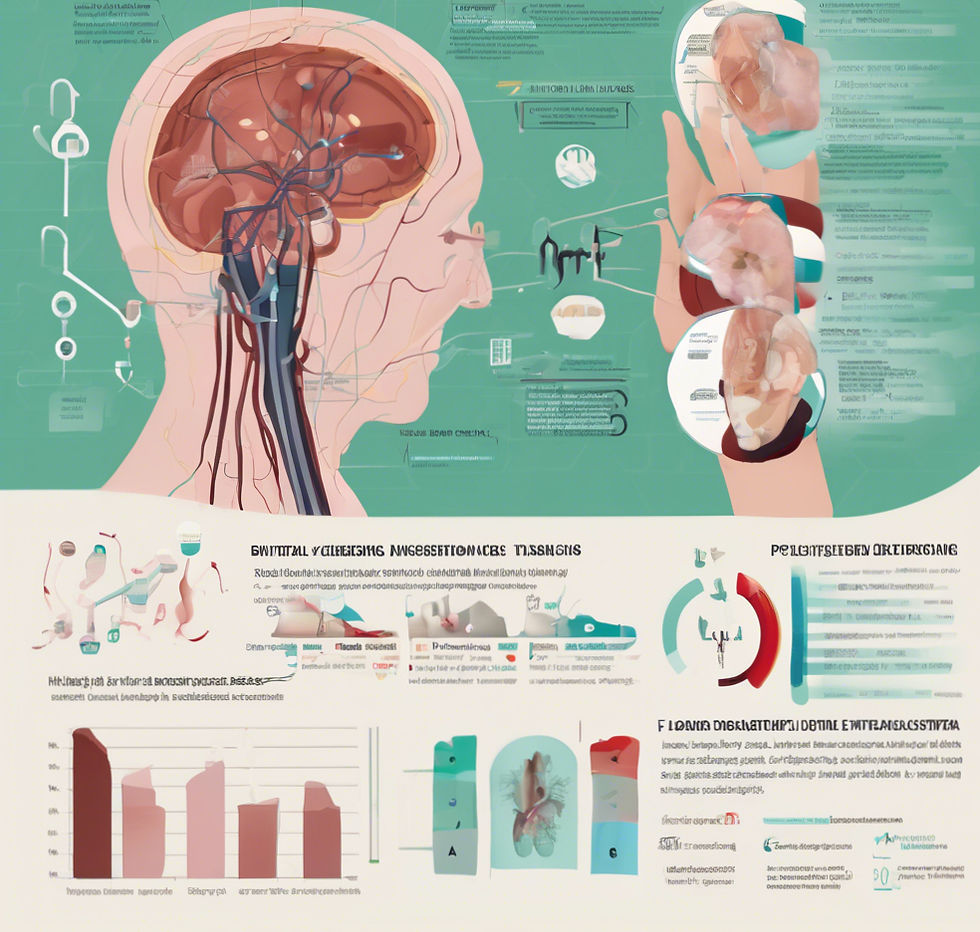Navigating the Regulatory Landscape in Neurodegenerative Disease Product Development
- Alex Lou
- Jan 8, 2024
- 2 min read
Navigating the Regulatory Landscape in Neurodegenerative Disease Product Development Developing digital technologies for neurodegenerative diseases is a complex and challenging task. Not only do you need to ensure that your products are effective and safe, but you also need to navigate the regulatory landscape to bring them to market. In this blog post, we will explore some key considerations and tips for successfully navigating the regulatory landscape in neurodegenerative disease product development. 1. Understand the Regulatory Requirements: The first step in navigating the regulatory landscape is to have a clear understanding of the regulatory requirements for your target market. Different countries and regions may have different regulations and approval processes. It is important to thoroughly research and understand the specific requirements that apply to your product. 2. Engage with Regulatory Authorities Early: It is advisable to engage with regulatory authorities early in the product development process. This can help you gain insights into the regulatory requirements and ensure that your product is designed and developed in compliance with those requirements. Early engagement can also help you establish a positive relationship with the regulatory authorities, which can be beneficial during the approval process. 3. Develop a Comprehensive Regulatory Strategy: A comprehensive regulatory strategy is essential for successfully navigating the regulatory landscape. This strategy should outline the steps and timelines for obtaining regulatory approvals. It should also include plans for addressing any potential regulatory challenges or roadblocks that may arise during the development process. 4. Conduct Robust Clinical Studies: Clinical studies play a crucial role in obtaining regulatory approvals for neurodegenerative disease products. It is important to design and conduct robust clinical studies that generate high-quality data to support the safety and efficacy of your product. This may involve collaborating with clinical research organizations or academic institutions with expertise in neurodegenerative diseases. 5. Document and Maintain Regulatory Compliance: Throughout the product development process, it is important to document and maintain regulatory compliance. This includes keeping detailed records of all development activities, conducting regular internal audits, and ensuring that all necessary regulatory documentation is complete and up to date. This will help streamline the approval process and demonstrate your commitment to regulatory compliance. 6. Stay Updated on Regulatory Changes: Regulatory requirements and guidelines for neurodegenerative disease products may evolve over time. It is crucial to stay updated on any changes in the regulatory landscape that may impact your product development. This can be done by regularly monitoring regulatory websites, attending industry conferences, and engaging with regulatory experts. Navigating the regulatory landscape in neurodegenerative disease product development can be challenging, but with careful planning and adherence to regulatory requirements, it is possible to bring safe and effective products to market. ClearSky Medical Diagnostics, with their expertise in clinical research support and product development, can provide valuable guidance and support throughout the regulatory process. By following these tips and leveraging the services offered by ClearSky Medical Diagnostics, you can navigate the regulatory landscape with confidence and bring innovative solutions to patients suffering from neurodegenerative diseases.








I was diagnosed with Parkinson’s disease four years ago. For over two years, I relied on prescription medications and therapies, but unfortunately, the symptoms continued to worsen. My mobility declined, tremors increased, and I experienced growing fatigue and discomfort that affected my daily life. Last year, out of desperation and hope, I decided to try an herbal treatment program from NaturePath Herbal Clinic. Honestly, I was skeptical at first, but within a few months of starting the treatment, I began to notice real changes. My energy improved, the discomfort eased, and I felt stronger and more capable in my daily life. Incredibly, I also regained much of my stamina, balance, and confidence. It’s been a life-changing experience I feel more…